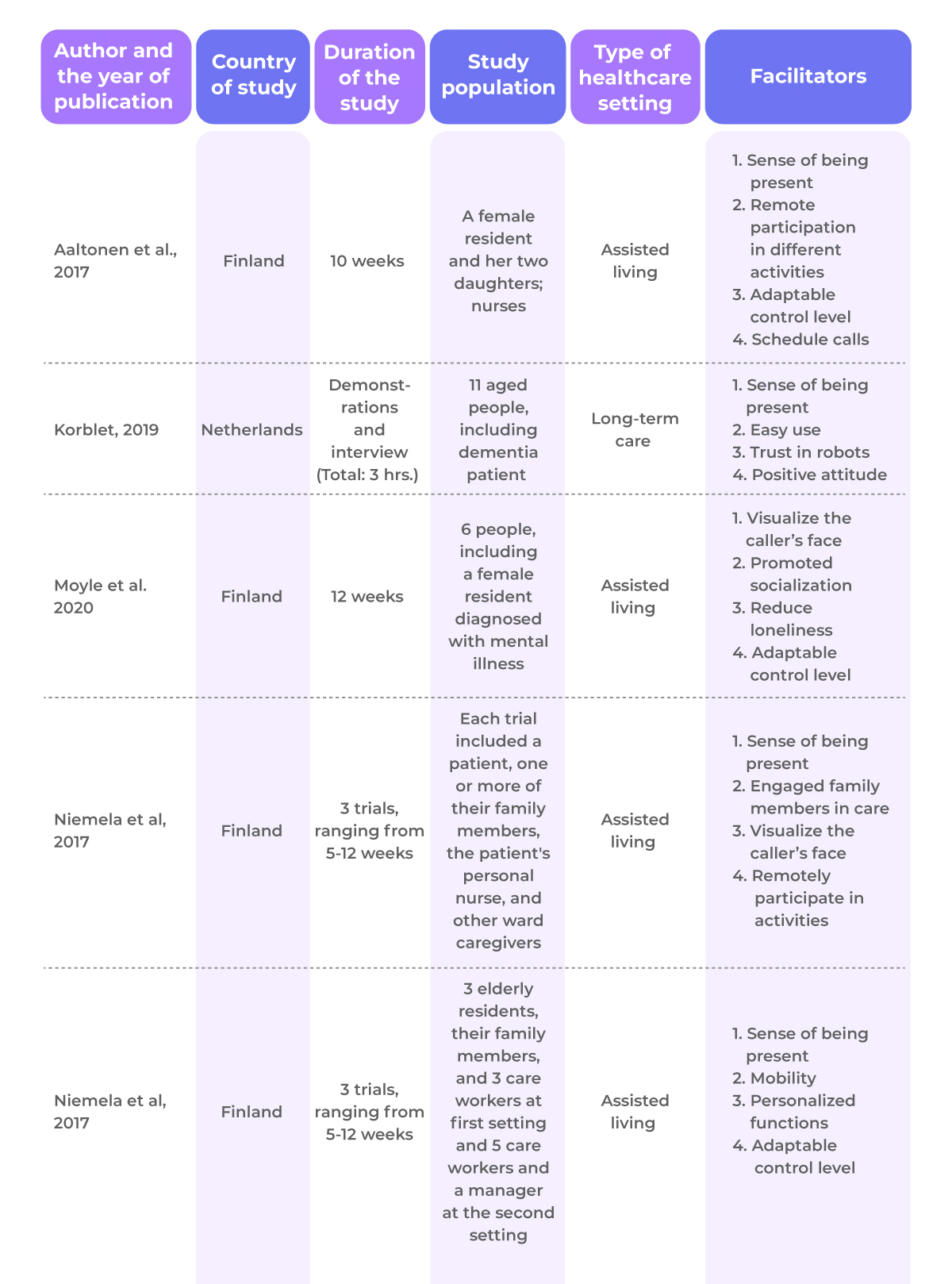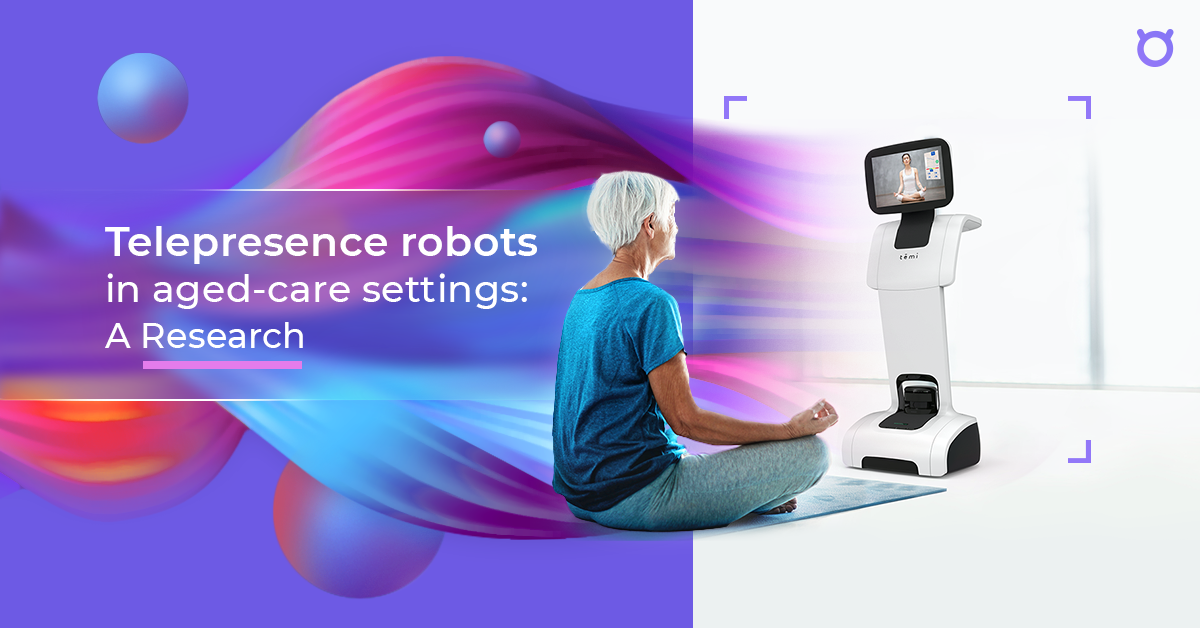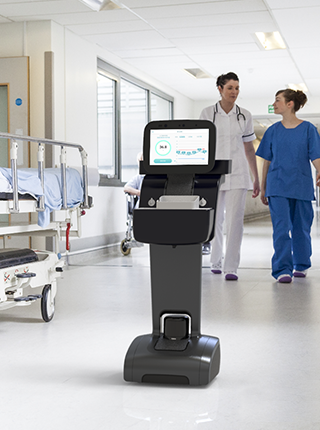As the world’s population ages, there is a growing need for automated help. The World Health Organization (WHO) estimates that more than 1 billion persons are over 60 globally. That number is expected to increase to 1.4 billion by 2030, or one in six people, necessitating the need for robot intervention complementing their human counterparts.
Telepresence robots have the potential to add significant value in this regard. Through evidence-based studies, this research paper aims to explore facilitators for implementing telepresence robots (e.g., Double 3 and temi) in aged care settings. Read on.
Robots for elderly care: Key drivers
Telepresence robots offer many advantages for elderly care, such as reducing social isolation and alleviating technical challenges through remote-controlled functions, which require no learning or operating on the part of the elderly.
Role of a telepresence robot to mitigate social isolation
Social isolation has remained a significant problem in aged-care settings, especially during the COVID-19 pandemic, and is linked to adverse outcomes like loneliness, depression, and cognitive decline. Several robots, in particular, telepresence robots (e.g., Double 3, temi), are being used in long-term care (LTC) or hospital environments to lessen social isolation by enabling aged patients or residents to connect with remote users like their families or therapists.
Telepresence robots have wheels for mobility and enable videoconferencing for real-time communication. These robots have been employed in various settings, including business meetings and remote learning. However, the application of robotics in elderly care environments is expanding to facilitate social interactions and improve the quality of life for older adults. Telepresence robots can soothe the effects of isolation by fostering safe social ties, especially given the visitor limitations and social isolation present in elderly care settings. The robots can walk around the care facility and engage in face-to-face communication thanks to their remote connection.
Role of a telepresence robot as a helping assistant
Mobility is one of the significant concerns that most older people struggle with. Hiring additional human healthcare professionals may be necessary to monitor them 24 hours a day for all their needs. But deploying robots can alleviate a great deal of workload from human workers and save time. Robots can be automated for more manageable tasks, and a trained operator can control the robot for some tasks. Furthermore, a nurse or doctor could use the machines to communicate with the patient remotely for more complex matters.
Hospitals are excellent grounds for assistive robots like temi due to their semi-structured environment. Since variables like door designs and corridor widths are frequently fixed, tasks like navigation are not different from those performed on manufacturing floors and in warehouses, where robot deployment is already widespread. temi can be hired as a hospital assistant in healthcare facilities and clinics. It can assist patients and guide aged people in filling out hospital forms or checking out.
Acceptance of telepresence robots
Users’ and stakeholders’ acceptance of telepresence robots is essential for technological adoption as innovation advances. 2016 study by Koceski S, Koceska N. and a 2019 study by researchers of the Netherlands University of Twente on potential users (older adults, family members, and health professionals) indicated that telepresence robots are generally accepted.
A recent study on “Social telepresence robots: a narrative review of experiments involving older adults before and during the covid-19 pandemic” identified the factors contributing to the acceptance of telepresence robots, including usability and the potential to reduce social isolation.
Summary of evidence-based studies on Double in aged care
Multiple studies have been conducted during the last few years to fully explore how the telepresence robot Double can facilitate elderly care. The below Table presents a summary of the selected articles we mapped by 6 domains: author and publication year, country of study, duration of the study, study population, type of healthcare setting, and facilitators.

The bottom line
Telepresence robots provide joy and a sense of connection by using live video as opposed to other technologies (e.g., telephone). Robots like temi or Double 3 cut down on the travel time needed for in-person visits. Watching and participating remotely in activities was easier with them than with a conventional phone call. In addition, the robot helped family members better grasp the residents’ health status and care planning and assisted them in conveying concerns to healthcare professionals, all of which improved the residents’ treatment. Even though research into the best methods for their successful application in these settings (such as long-term care facilities) is still in its infancy, it is apparent that telepresence robots can potentially revolutionize the future of elderly care.
Drop us a line
Error: Contact form not found.





